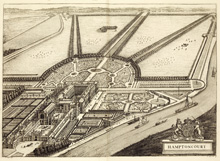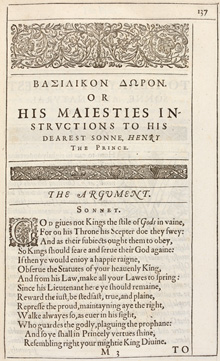Hampton Court
The accession of King James VI of Scotland to the throne of England was received with enthusiasm, not least by members of the Puritan wing in the Church. During his triumphal progress south in 1603 James was presented with a petition allegedly signed by a thousand ministers hoping for a completion of the Reformation in the Church of England. Many aspects of the Elizabethan settlement were unsatisfactory to more radical Protestants; it was hoped that a monarch from Calvinist Scotland would be more sympathetic to their concerns.
The three day conference held at Hampton Court in early 1604 to resolve these matters was, however, a disappointment. James proved much less sympathetic to the Puritans than they had hoped, and most of their petitions were dismissed out of hand. Only the notion of a new translation of the Bible, introduced by the Puritan delegation at the close of the second day of the conference and apparently received with little warmth, was to produce a tangible result.


